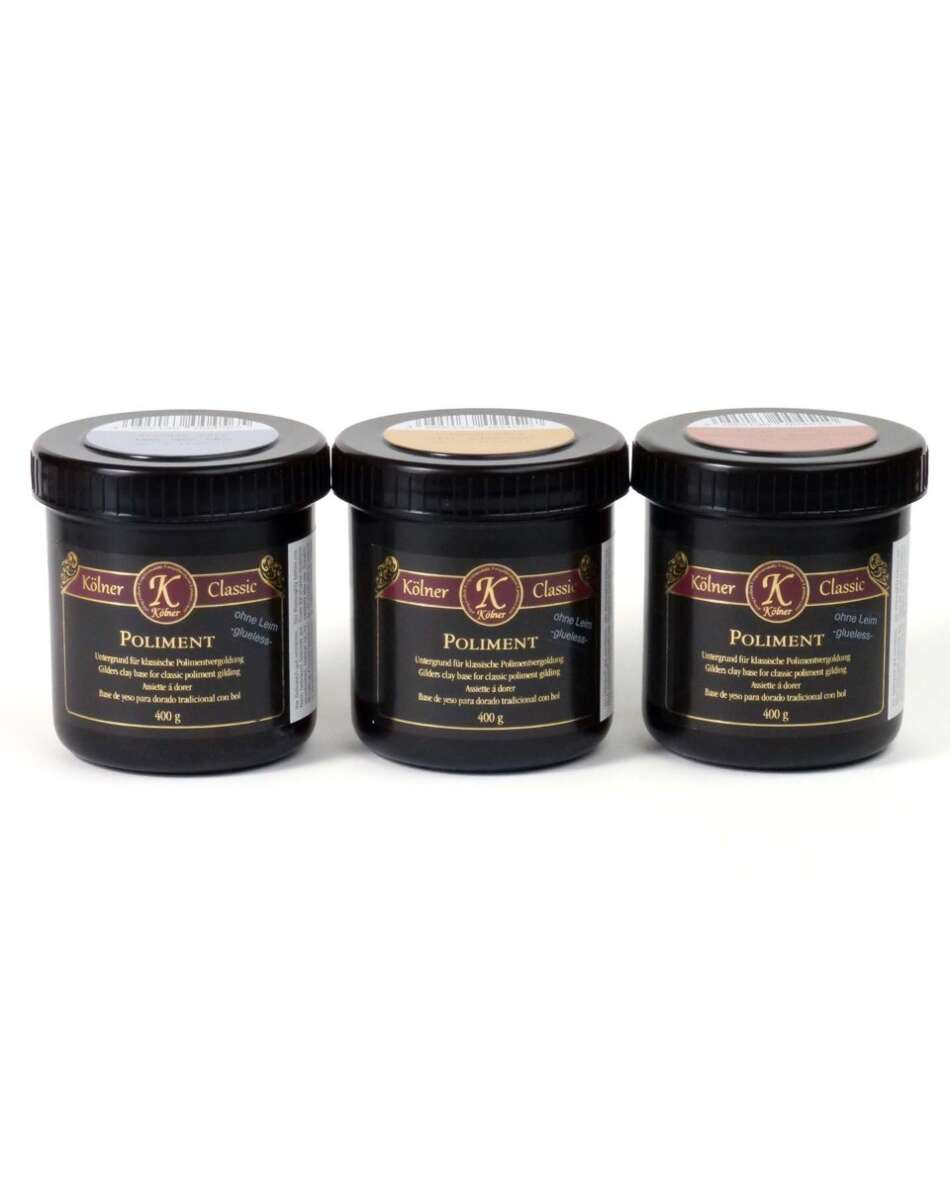Clay bole for gilding is traditionally made by mixing finely ground clay with water. You add a binding agent such as animal collagen glue. The consistency should be thick yet spreadable. Clay bole is available in several colors—red, ochre, blue, and black. Traditionally, red and ochre are typically used with gold leaf, while red and black are used with silver leaf. The mixture is applied to the surface prepared with gesso or chalk glue ground to create a smooth, absorbent base for gold leaf.
Kölner Classic Poliment - A Professional Bole For Historical Gilding Techniques
Products from Kölner Classic once again enable reliable, historical gilding for today. Kölner Classic products are not newly invented—they were developed based on historical gilding techniques. With this new edition, the profession of gilding and the associated restoration work are once again fully secured. Poliment is also known as bole—a clay-like substance. Poliment enhances the tone and luster of gold during polishing and burnishing. Learn more about Kölner Classic Poliment
Poliment, also known as bole (or bolus), is a clay-like substance. It enhances the tone and luster of the gold during the polishing and burnishing process. During poliment gilding, it serves as a base for the gold leaf. It is applied to a surface, usually prepared with gesso, a mixture of chalk and glue. This poliment layer and the chalk primer underneath form the base, enabling the gold to be polished with agate stones to a high shine.
Kölner Classic Poliment is an unbound poliment. Meaning, before using it, it must be mixed with glue (hide glue or rabbit glue), gelatin, or egg white. Kölner Classic Poliment is already made into a paste with water. Poliment gilding should only be carried out on absorbent surfaces. The gold is then applied to the poliment.
Frequently Asked Questions
How do you make a clay bole for gilding?
How do you make gesso for gilding?
Gesso for gilding is made by combining gypsum (calcium sulfate) or chalk (calcium carbonate) with animal collagen glue and water. This mixture is heated until it forms a smooth paste. It is applied warm to the substrate in layers, providing a sturdy, smooth surface ideal for applying gold leaf and other metal leaves.
How long do you wait to burnish gold leaf?
The waiting time before burnishing gold leaf can vary depending on the adhesive and environmental conditions, but typically, it is best to allow the gold leaf to set for about 24 to 48 hours. This allows the adhesive beneath the gold leaf to dry completely, ensuring a firm attachment and a smooth burnishing process.
| SKU | 350-14 |
|---|---|
| Brand | Kölner Gilding Products |
| Vendor | Kölner Gilding Products |
| Processing Time | Usually ships the next business day. |



